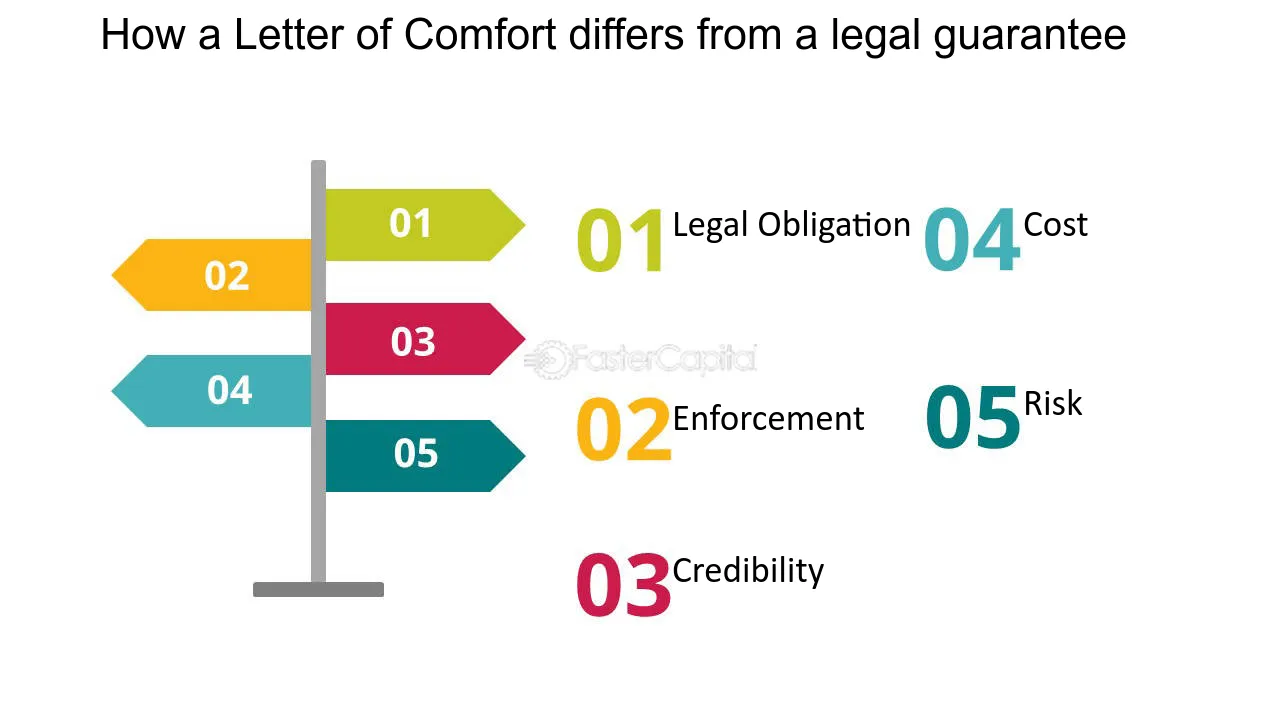Letter of Comfort: Definition, Uses, Vs Guarantee

A letter of comfort is a written document that provides reassurance and support to a recipient, usually in a business or financial context. It is typically issued by a parent company to a subsidiary or by a company to its creditors or business partners.
The letter of comfort is not a legally binding document, but it carries significant weight and can be used to demonstrate the commitment and financial strength of the issuing party. It is often used as a tool to enhance trust and confidence between parties involved in a business transaction.
Unlike a guarantee, which creates a legally enforceable obligation, a letter of comfort is more of a moral commitment. It expresses the intention of the issuer to support the recipient in case of financial difficulties or other challenges. However, it does not create a legal obligation to provide financial assistance.
The uses of a letter of comfort can vary depending on the specific situation. It can be used to reassure lenders or investors about the financial stability of a company, especially when the company is undergoing a significant change or facing uncertainties. It can also be used to strengthen business relationships and secure contracts by demonstrating the commitment of one party to another.
It is important to note that while a letter of comfort may provide reassurance, it is not a substitute for proper due diligence and risk assessment. It is always advisable for parties involved in a business transaction to conduct thorough research and analysis before relying solely on a letter of comfort.
Definition of Letter of Comfort

The purpose of a letter of comfort is to give the recipient confidence in the financial stability and commitment of the issuing party. It serves as a form of informal guarantee or assurance that the issuer will take certain actions or provide financial support if needed.
A letter of comfort typically contains language that expresses the issuer’s willingness to support the recipient in various ways, such as providing financial assistance, extending credit, or maintaining a certain level of financial performance. It may also outline the specific conditions or circumstances under which the support will be given.
Key Features of a Letter of Comfort
There are several key features that distinguish a letter of comfort from other types of financial instruments:
- Non-binding: A letter of comfort is not legally binding and does not create a contractual obligation. It is a statement of intent or moral commitment.
- Informal: Unlike a formal guarantee or contract, a letter of comfort is typically less detailed and more flexible in its terms.
- Reassurance: The main purpose of a letter of comfort is to provide reassurance to the recipient, giving them confidence in the financial stability and commitment of the issuer.
- Conditional: A letter of comfort may outline specific conditions or circumstances under which the support will be given. These conditions are typically negotiated between the parties involved.
Overall, a letter of comfort is a useful tool in business transactions where one party wants to provide reassurance or support to another party without entering into a legally binding agreement. It can help build trust and confidence between parties and facilitate financial transactions.
Uses of Letter of Comfort
A letter of comfort is a document that is often used in business transactions to provide assurance or support to a party involved in the transaction. It is not a legally binding document, but rather a statement of intent or commitment from one party to another. Here are some common uses of a letter of comfort:
1. Financial Support
A letter of comfort can be used to provide financial support or assurance to a third party. For example, a parent company may issue a letter of comfort to a bank to assure them that they will provide financial support to their subsidiary if needed. This can help the subsidiary secure a loan or credit facility.
2. Business Relationships
A letter of comfort can also be used to strengthen business relationships between two parties. For instance, a supplier may issue a letter of comfort to a buyer to assure them that they will continue to supply goods or services in a timely manner. This can help build trust and confidence between the parties involved.
Additionally, a letter of comfort can be used to reassure investors or shareholders about the financial stability of a company. This can be particularly useful in situations where there may be concerns about the company’s ability to meet its financial obligations.
3. Project Financing
In project financing, a letter of comfort can be used to provide assurance to lenders or investors that a project will be completed as planned. This can help attract financing and support for the project. The letter of comfort may outline the project’s timeline, budget, and the commitment of the parties involved to ensure its successful completion.
It is important to note that a letter of comfort is not a legally binding document and does not create any legal obligations. However, it can serve as a valuable tool in business transactions to provide assurance and support to parties involved.

Emily Bibb simplifies finance through bestselling books and articles, bridging complex concepts for everyday understanding. Engaging audiences via social media, she shares insights for financial success. Active in seminars and philanthropy, Bibb aims to create a more financially informed society, driven by her passion for empowering others.
